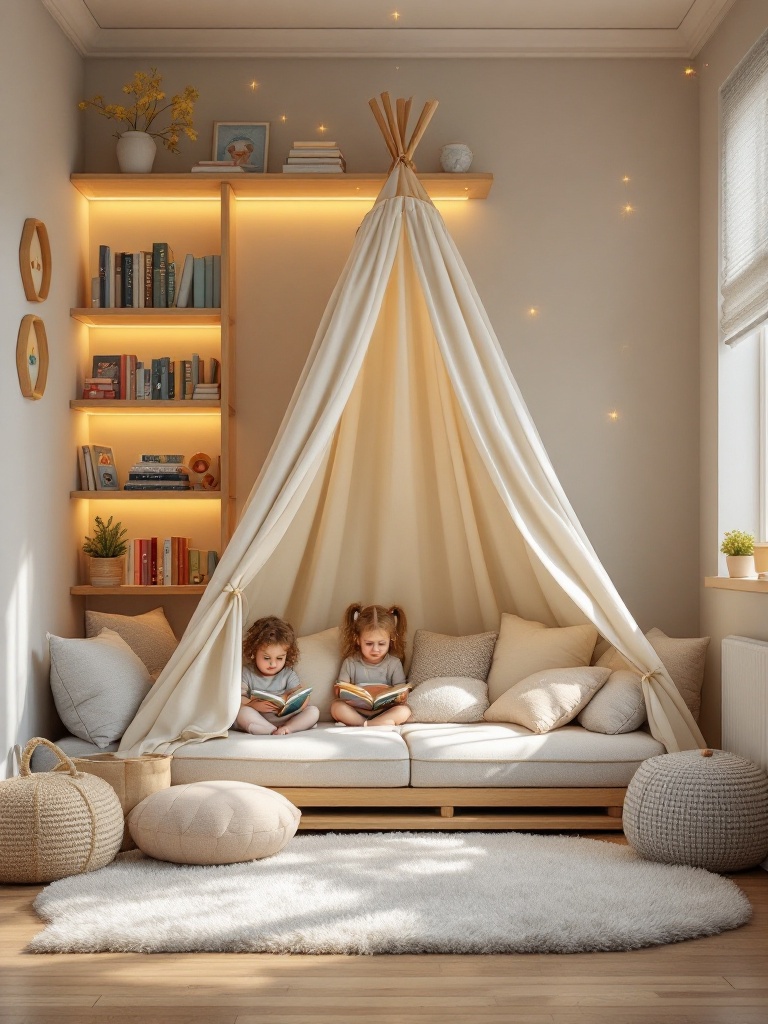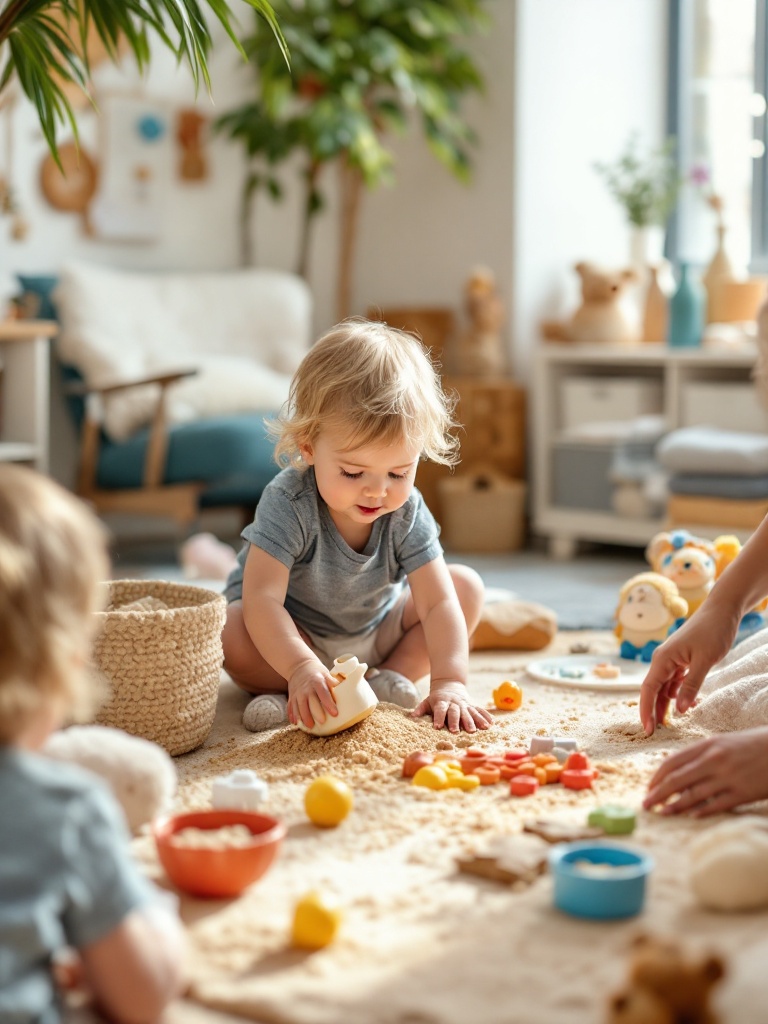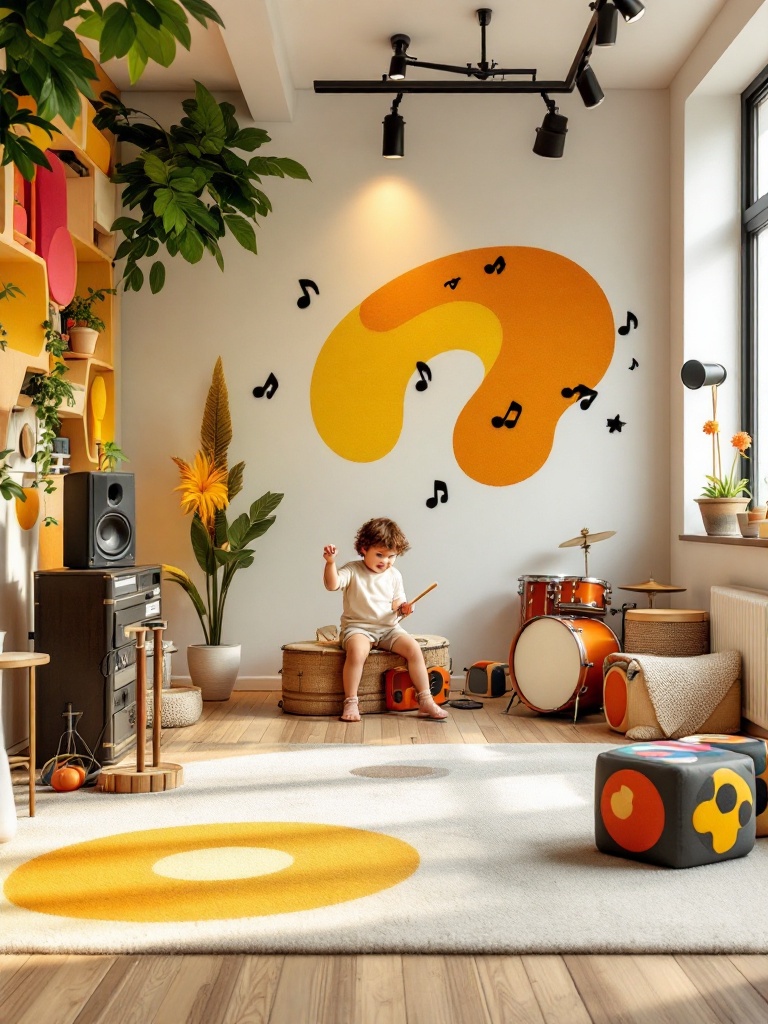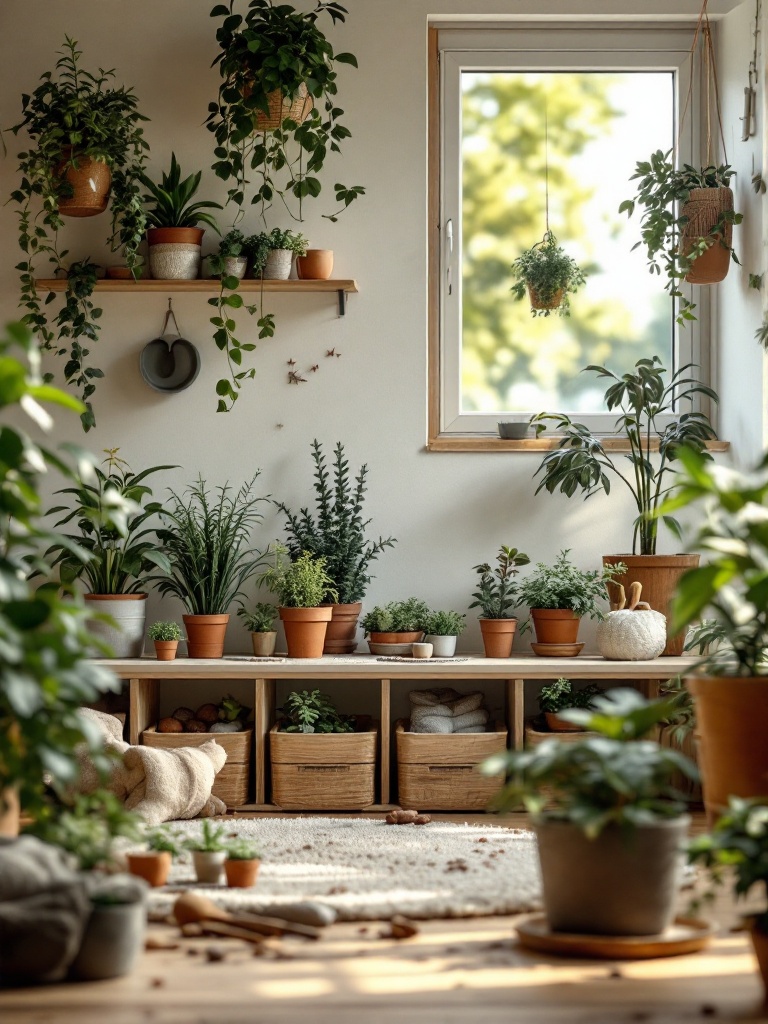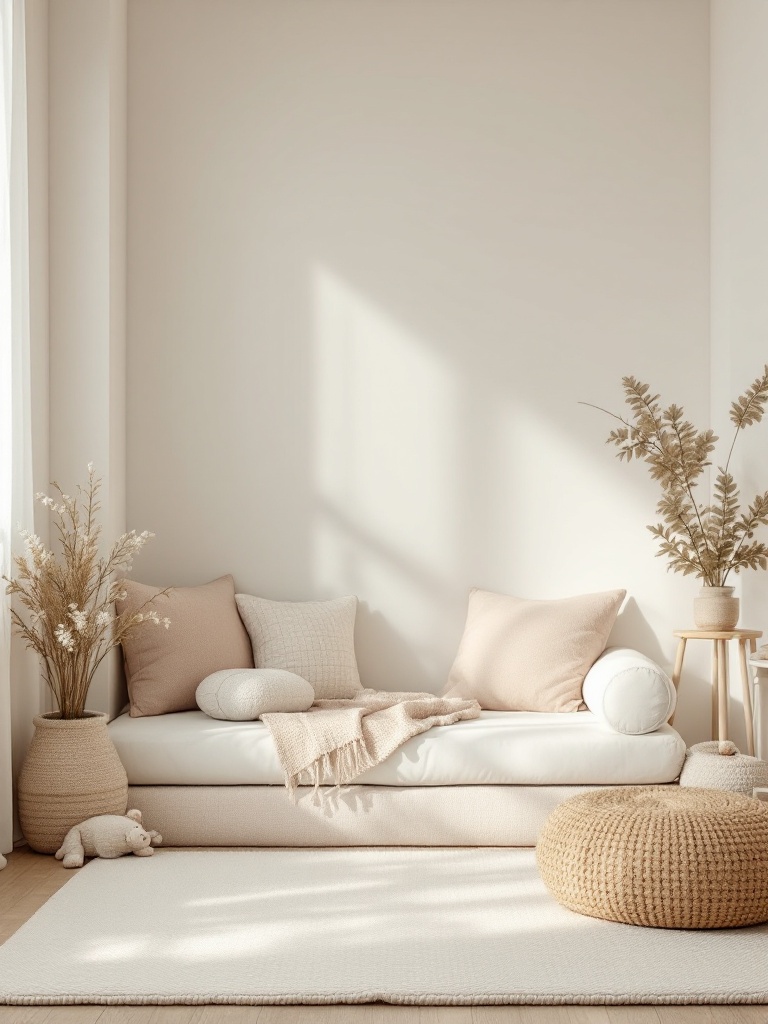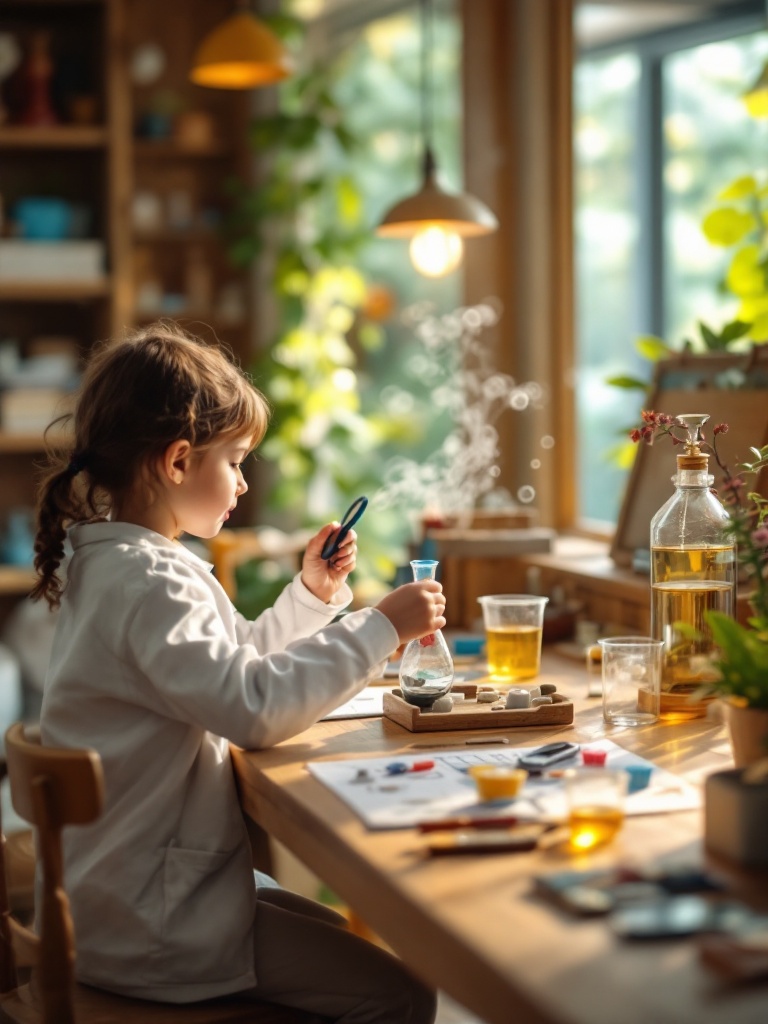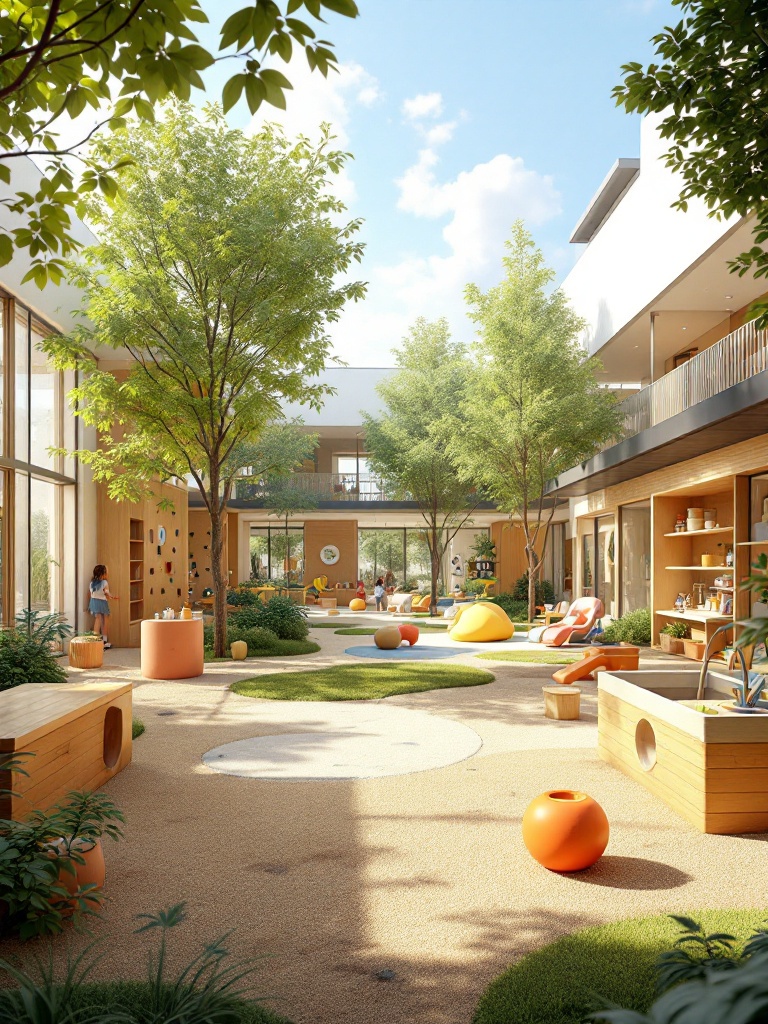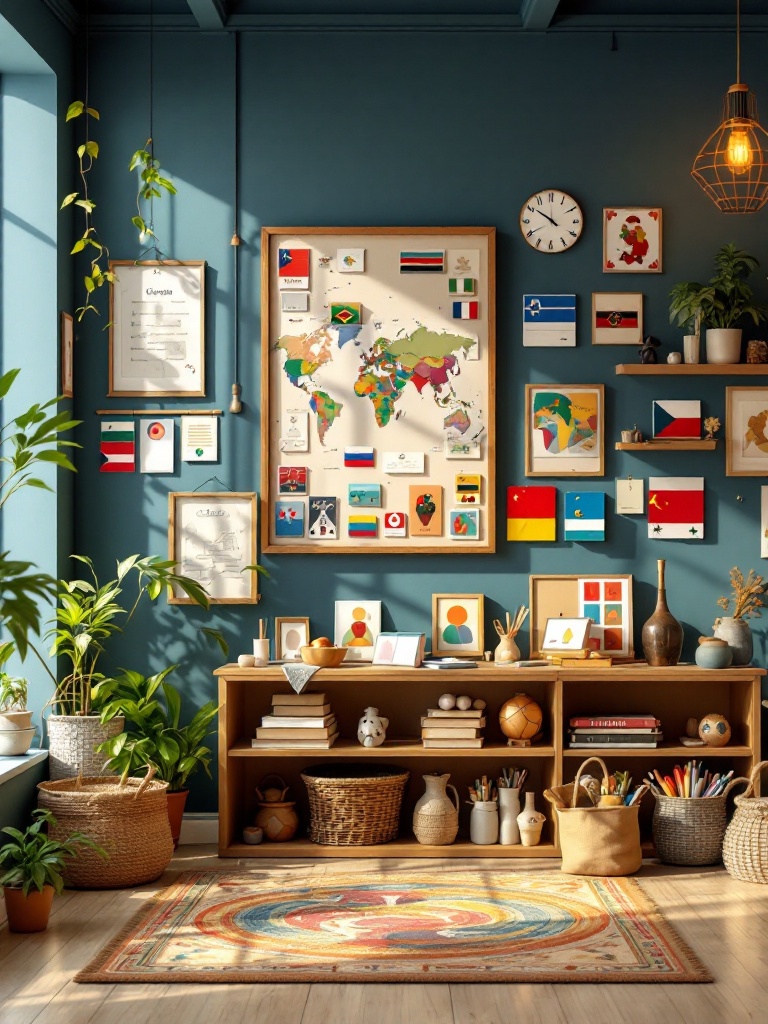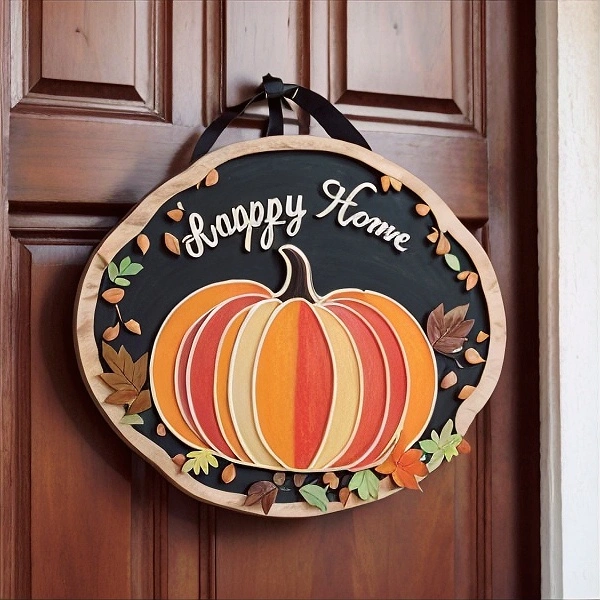Designing a daycare room requires careful consideration of the children’s needs, safety, and learning potential. A well-thought-out setup fosters not only creativity but also promotes a nurturing environment where kids can thrive. This article presents 12 innovative daycare rooms setup ideas to enhance comfort, engagement, and learning for young children.
From cozy reading corners to interactive play zones, the right setup can elevate a daycare’s atmosphere, making it a place that children look forward to attending. Each idea aims to stimulate imagination, encourage social interaction, and support educational development, all while ensuring a safe and welcoming space.
1. Cozy Reading Nook
A cozy reading nook is essential in any daycare room, offering a quiet space for children to explore stories. Use soft cushions, low shelves filled with books, and warm lighting to create an inviting atmosphere. A small tent or canopy can enhance the ambiance, making it a little sanctuary for kiddos to dive into their favorite tales.
This arrangement encourages children to develop their love for reading and provide a peaceful spot for them to unwind during busy days filled with activities.
2. Creative Art Station
An art station is crucial for fostering creativity in young minds. Providing materials such as paper, crayons, paints, and various crafting supplies can inspire endless artistic expression. Ensure that the area has easy access to cleaning supplies for quick cleanups to manage the inevitable mess.
Encouraging open-ended art activities allows children to explore their creativity while developing fine motor skills, making this setup beneficial for their growth.
3. Interactive Learning Corner
An interactive learning corner equipped with educational games and puzzles is vital for cognitive development. Incorporate engaging materials that cover various subjects such as numbers and letters, science, and geography. Colorful posters and manipulatives can also enhance this area.
This setup promotes independent learning while allowing teachers to facilitate group activities, making it an essential feature for any daycare.
4. Sensory Play Area
A sensory play area is immersive and highly beneficial for toddlers. Provide materials with various textures, sensory bins filled with sand, water, or grain, and tactile toys that kids can explore with their hands. Ensure that this area is safe and tailored to the children’s interests.
Engaging in sensory play aids in the development of fine motor skills and cognitive abilities, offering a fun way for kids to learn through exploration.
5. Music and Movement Zone
A music and movement zone is essential for promoting physical activity and self-expression. Equip this area with instruments like tambourines, xylophones, and rhythm sticks, along with a space for dancing. A simple sound system can also enhance the experience with music for kids to move and groove to.
This setup allows children to develop gross motor skills while discovering their rhythm and coordination in a fun and energetic environment.
6. Dramatic Play Area
A dramatic play area encourages role-playing and social interaction. Create a space resembling a home, grocery store, or medical office with props and costumes for children to engage in imaginative play. This kind of setup fosters creativity and cooperation, allowing children to explore different roles.
Through dramatic play, children develop communication skills and emotional intelligence, making it an invaluable part of any daycare room.
7. Nature Exploration Zone
A nature exploration zone incorporates elements of the outdoors into the daycare environment. Introduce plants, small gardening tools, and nature-themed decorations to create an earthy vibe. Include a window for natural light and create opportunities for kids to observe nature.
This setup encourages curiosity and respect for the environment, fostering an understanding of nature while promoting imaginative play.
8. Quiet Zone for Rest
A quiet zone for rest is crucial for toddlers who need downtime throughout the day. Designate a nook with mats, soft pillows, or small cots where children can relax, listen to calming music, or enjoy a story. A muted color scheme can enhance the soothing atmosphere.
This setup acknowledges the importance of rest and allows children to recharge, ensuring they remain engaged in activities throughout their day.
9. Science Discovery Station
A science discovery station introduces children to the wonders of the natural world. Set up experiments filled with safe materials, magnifying glasses, and activity kits that encourage exploration of basic science concepts. This fosters inquiry and a sense of wonder.
This setup not only makes learning about science fun but also promotes critical thinking skills as children experiment and ask questions about what they observe.
10. Outdoor Learning Space
An outdoor learning space maximizes natural light and fresh air while providing a platform for kids to learn and play outside. Set up climbing equipment, sandboxes, and areas for interactive play. Equip the area with materials for art or scientific exploration.
This setup enhances physical activity, social interaction, and a connection to nature—important aspects of overall child development.
11. Cultural Awareness Corner
A cultural awareness corner instills appreciation and respect for diversity among children. Display flags, artifacts, or books representing various cultures. Encourage storytelling sessions where kids can share tales about their backgrounds.
This setup enriches children’s understanding of the world, fostering inclusiveness and empathy while celebrating the differences that make everyone unique.
12. Parent Communication Wall
Creating a parent communication wall is vital for keeping families involved in their children’s daycare experience. Use this wall to post schedules, upcoming events, and children’s artwork or progress. This fosters a sense of community and transparency.
This setup helps parents feel connected to their child’s learning journey, encouraging them to engage and communicate with the daycare team.
Conclusion
Implementing these daycare rooms setup ideas can significantly enhance the learning and playing experience for children. Each creative arrangement not only supports optimal development but also fosters a sense of community, safety, and comfort.
By incorporating thoughtful design and interactive elements, a daycare can create an environment where children feel inspired, engaged, and ready to explore the world around them.
Frequently Asked Questions
What is the ideal size for daycare rooms?
The ideal size for daycare rooms varies, but generally, a space of at least 35 square feet per child is recommended to ensure comfort and safety.
How can I make a daycare room more engaging?
Utilizing vibrant colors, interactive play areas, and creative displays can make a daycare room more engaging and stimulating for children.
What safety measures should I consider in daycare room setup?
Make sure to install safety equipment, secure furniture to walls, use non-toxic materials, and maintain a clean environment to ensure the safety of all children.
How important is outdoor space in daycare?
Outdoor spaces are essential in daycare setups as they promote physical activity, social interaction, and exploration, contributing significantly to a child’s well-being.
How can I involve parents in the daycare setup?
Involve parents by seeking their input on designs, organizing decorating days, and sharing children’s artwork to foster a collaborative daycare community.

